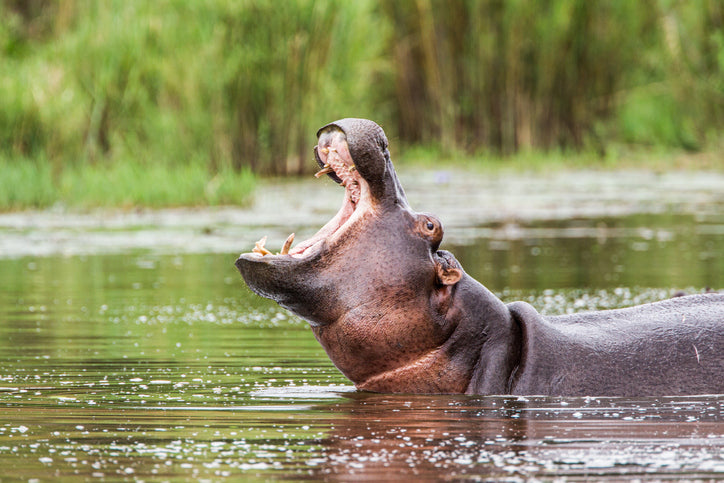
Hippo
Share
The Mighty Hippos of Kruger National Park 🦛
In the waters and along the riverbanks of Kruger National Park, the mighty hippo makes its presence known. These massive creatures are not only a vital part of the aquatic ecosystem but also one of the most iconic and intriguing animals in the park.
Water Giants: Hippos spend much of their day submerged in rivers and lakes to keep their massive bodies cool under the hot African sun. Despite their hefty appearance, hippos are graceful swimmers and can hold their breath underwater for up to five minutes. 🌊🌞
Nighttime Grazers: Though they're often seen in the water, hippos venture out at night to graze on land. They follow well-trodden paths to their favorite feeding spots, consuming up to 35 kilograms of grass each night. This nocturnal behavior helps maintain the balance of their diet and energy expenditure. 🌙🌾
Social Structure: Hippos live in groups called pods, which can contain dozens of individuals, including females, their young, and a few dominant males. These groups provide safety and social interaction for hippos, which communicate with each other through loud honks and grunts. 🦛👂
Territorial by Nature: Males are particularly territorial when it comes to their water-based domains. They display their dominance through impressive yawns that show off their large, powerful jaws and teeth, meant to intimidate rivals and attract mates. 🦷💪
Fun Fact for Kids: Did you know that despite their enormous size, hippos can run faster than humans on land? They can sprint at speeds of up to 30 kilometers per hour over short distances, a surprising fact given their bulky form. 🏃♂️💨
Engage and Learn: As you color in the Hippo on your Kruger Park roll, think about how these huge animals spend their days soaking in the cool rivers and their nights wandering the grassy floodplains. Coloring hippos can help you appreciate the fascinating life of one of Africa’s largest herbivores. 🖍️📘